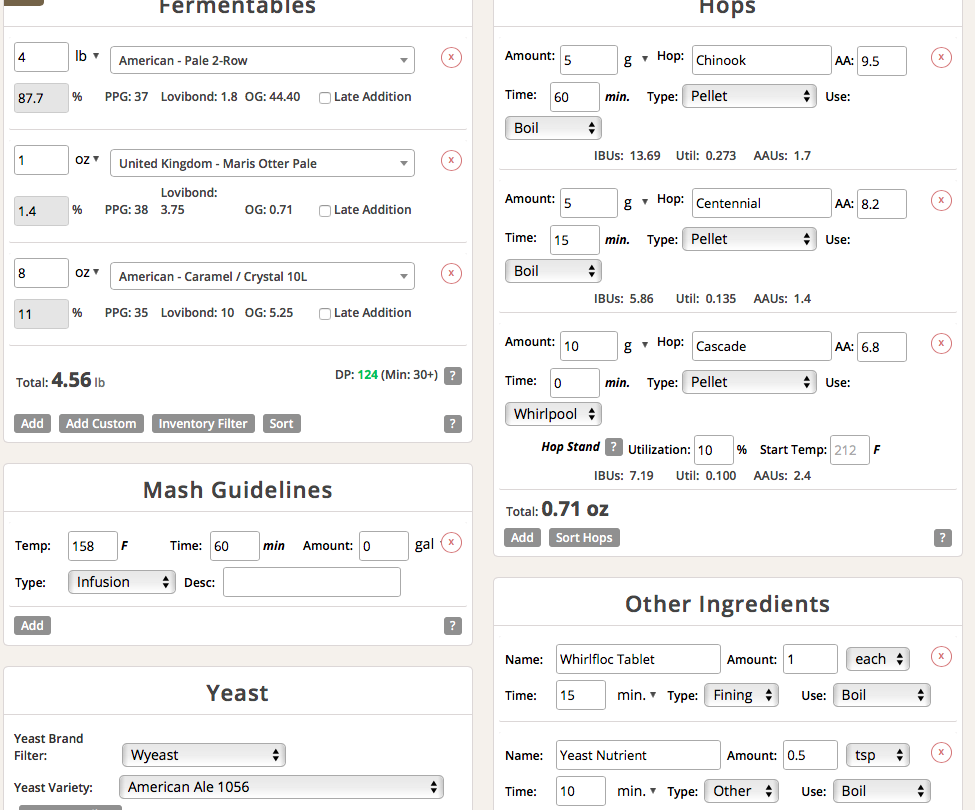Hello All,
So I am about 9 batches in and the last 5 have been BIAB which I am enjoying for the time being. I am now working through the Designing Great Beers book to learn about recipe development. Below is my first attempt at a simple Blonde. Was looking for something easy going on a hot summer day. I like the sweetness marries otter brings so added a bit of that. Let me know your thoughts or suggestions. Thanks in advance
This is for a 2 1/2 gallon batch.

So I am about 9 batches in and the last 5 have been BIAB which I am enjoying for the time being. I am now working through the Designing Great Beers book to learn about recipe development. Below is my first attempt at a simple Blonde. Was looking for something easy going on a hot summer day. I like the sweetness marries otter brings so added a bit of that. Let me know your thoughts or suggestions. Thanks in advance
This is for a 2 1/2 gallon batch.































![Craft A Brew - Safale BE-256 Yeast - Fermentis - Belgian Ale Dry Yeast - For Belgian & Strong Ales - Ingredients for Home Brewing - Beer Making Supplies - [3 Pack]](https://m.media-amazon.com/images/I/51bcKEwQmWL._SL500_.jpg)


























